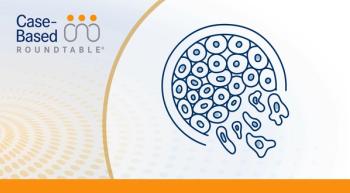
Using MRD Status to Guide Treatment for Relapsed/Refractory Multiple Myeloma
Nikhil C. Munshi, MD:One of the very interesting things about CAR [chimeric antigen receptor] T-cell therapy, besides a very high response ratewhich we keep on mentioning because we are so fascinated with it—is that we haven’t seen responses like this with any other treatment.
Parameswaran Hari, MD, MRCP:Exactly.
Nikhil C. Munshi, MD:In the fifth and sixth lines, having 90%-plus responses is unbelievable.
Parameswaran Hari, MD, MRCP:And that’s the guru of MRD. MRD was established, and this is even more amazing.
Nikhil C. Munshi, MD:That was going to be my point. Not only do we get a response, but we get a really deep responseover 50% of patients get MRD negativity. And it’s achieved very quickly. So any thoughts on that? What are your feelings on that? I know we’re all thrilled about it.
Parameswaran Hari, MD, MRCP:I’m very excited, just as you are, about the fact that we can get bone marrow MRD negativity very quickly. I do remain worried a little bit that T cells may work better in the bone marrow, and some of these relapses that we may see in the future might be extramedullary and in other sites. And that may need more imaging follow-up and additional follow-up in small sites, etcetera. So I’m actually very thrilled about the MRD-negativity rate in these studies, but I’m cautiously optimistic, I would say.
Nikhil C. Munshi, MD:Yeah. I think we both are on the same page about MRD. It is our ultimate goal. We’re all actually trying to make MRD the surrogate for response. It’s going to benefit everybody if we get that. From the point of view of patient care, that’s where we need to go.
Parameswaran Hari, MD, MRCP:Exactly.
Nikhil C. Munshi, MD:From the point of view of deciding treatment to some extent, and also from the point of view of doing studies, that we can get end points much more quickly.
Parameswaran Hari, MD, MRCP:Ultimately, if we are ever going to cure myeloma, those patients who are going to get cured have to get MRD negativity.
Nikhil C. Munshi, MD:But patients do still relapse, even when they are MRD negative, right?
Parameswaran Hari, MD, MRCP:Exactly.
Nikhil C. Munshi, MD:So I think similar to your allogeneic experience, that is where patients do relapse from extramedullary disease. So we ought to keep that in mind. Patients would have extramedullary disease. We follow these patients, we need to do appropriate investigation with PET/CT [positron emission tomography/computed tomography] and other tests to look for those. So MRD is great, but in these particular late-stage patients, looking for that...
Parameswaran Hari, MD, MRCP:It does not carry the same weight as the up-front that you have shown in the past.
Transcript edited for clarity.







































